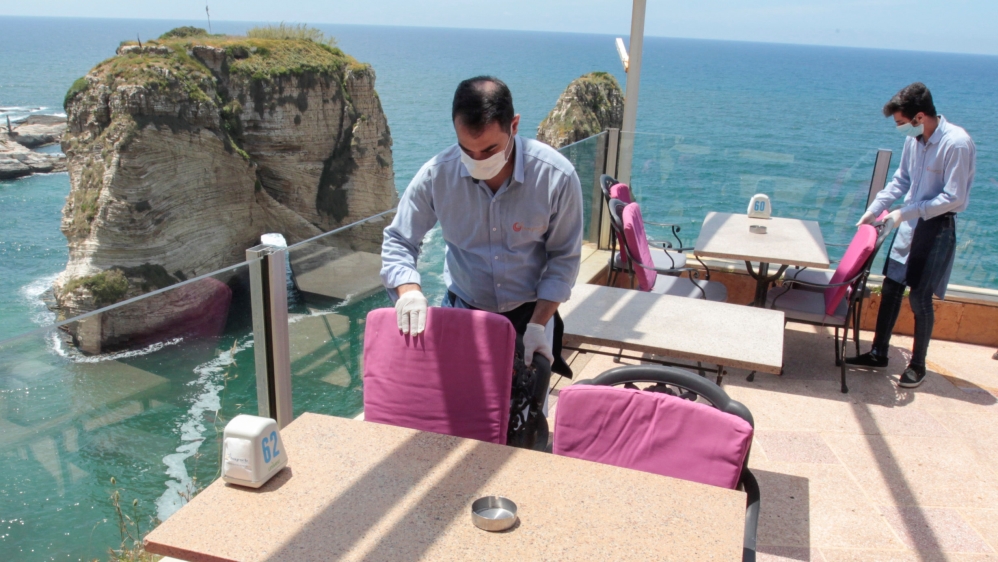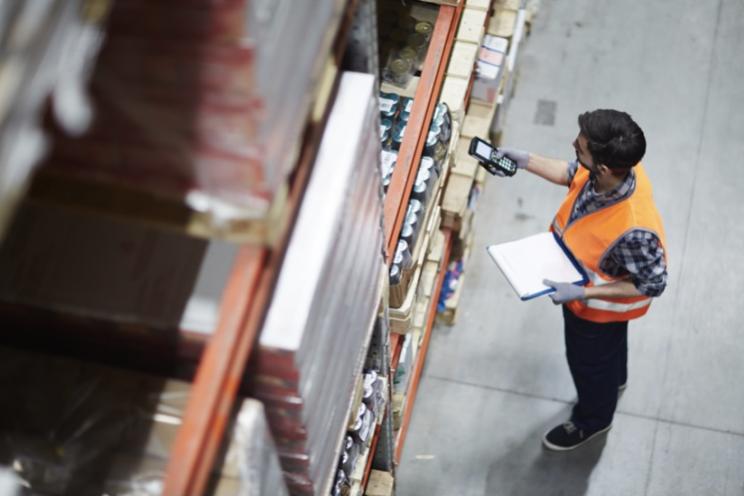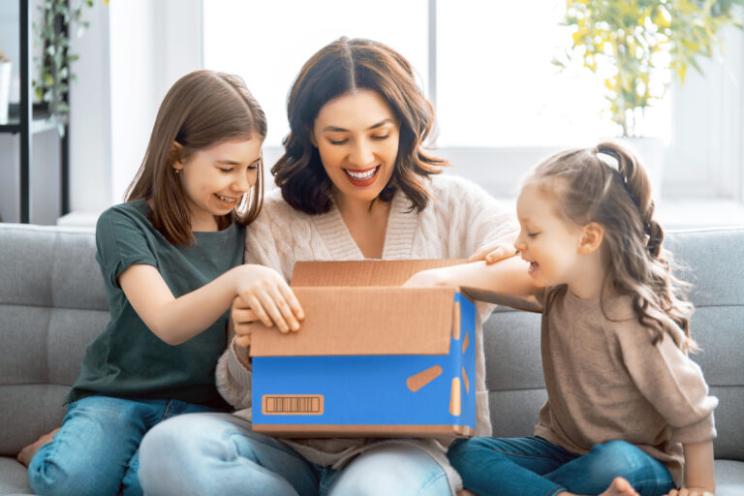Provide guides for customers to follow such as signs on the walls or tape on the floors to ensure people are being apart.
Do the same for your waiting area if you have one. Either label the seats that can’t be used by customers or remove the chairs to ensure limited seating capacity as per the regulations to allow social distancing.
Allow your customers to preorder their food to minimize their waiting time.
Embrace the open kitchen trend if it’s possible since it attracts customers to believe that you are transparent enough to show them what’s cooking and how with no fear.
If having an open kitchen is not an option, you can install cameras and show your customers the live kitchen.
Seeing your employees preparing their meals and following all health guidelines relieve customers that are concerned about the pandemic spreading and it ensures to them that proper health and safety protocols are being followed in the back scenes.
Limit the shared objects
implement a contactless menu where customers can scan a QR code and get the menu on their smartphones without any application installation like this one that costs as low as 15$/month.
- Use single serving condiments instead of the bottles for ketchup, mayonnaise, salt and pepper.
- Use no touch trash cans.
- Use touchless payment options if possible and encourage customers to use it like the tap card option instead of sharing money bills.
- Use disposable food services items such as napkins and utensils.
Delivery and take-out
In case you’re able to open your restaurant but with lower capacity or totally shut it down, consider delivery and take-out options.
It is becoming the new serving convenience especially in 2020 and it’s continuing to be like that for a while.
Offer contactless delivery to respond to your customers’ needs especially when there are restrictions on receiving people at your restaurant.
Add your resources to enhance your delivery services such as hiring new staff with scooters.
Get delivery supplies such as the utensils food packets.
If adding your resources seems like a hassle to you, hire a third-party delivery company to do the job for you.
As the pandemic continues to affect restaurant’ operations, remain competitive by adding special delivery menu to your regular ones.
How about creating ready for home cooking meals for your customers?
All they have to do is to assemble things together to enjoy your meals. Good examples of restaurants that tried the meal kits are “salon” and “Sartoria” in London as this article explains.
You can also post videos on how to assemble each meal.
This way you let them enjoy their favourite meals from the comfort of their homes served freshly.
You can even deliver your drinks and cocktails to your customers for a stay-in special night that they have.
All what they have to do is add some ice and voilà!
Your customers are enjoying a refreshing cocktail safely from their homes.
Pacifico located in Beirut introduced this idea during the beginning of the lockdown where they offered their customers the chance to enjoy a drink during lockdown with their bottled cocktail pitchers.
Thinking smart and the ability to adapt to different situations are what keep revenues coming in, right?
For take-outs, ensure that customers are waiting in their cars for their orders.
Encourage online ordering for take-outs to reduce waiting time and deliveries through your application or a third-party application.
Create offers especially designed for delivery menu and online ordering:
- Order online and get 20% off.
- Order online and get a free dessert. Or get a redeemable 20% on your next online purchase.
- Offer free delivery.
- You can also create happy hours for ordering online such as order between 2 pm and 5 pm and get 20% off your bill to encourage customers on ordering especially at slow times.
Maintain healthy operations
- Train your employees to follow safety and health procedures even when not supervised.
- Monitor any symptoms and let them inform you with any symptoms if you weren’t physically available to monitor them.
- Allow shifts with lower staff presence to ensure social distancing.
- Have a backup staff in case of any absence due to infected employees.
In case of infected employees, make sure they’re isolated. Plan a sick leave policy to keep everybody safe as this article suggests.
Clean and disinfect your restaurant and test any other employees who were in contact with the infected one.
For detailed hygiene requirements for restaurants during the pandemic, GWR consulting advises the below:
- Post signage at the entrance that states that no one with a fever or symptoms of COVID-19 is to be permitted in the premises.
- Take the body temperature of all employees, contractors and customers and assess symptoms prior to them entering the premises.
- Provide hand sanitisers (at least 70% alcohol) at the entrance of the premises and inside it.
- Maintain physical distancing
- Abide by the 50% capacity
- Clean and disinfect the premises frequently.
- Educate staff on maintaining personal hygiene, respiratory hygiene and on infection control measures adopted in the workplace.
- Emphasize effective hand hygiene including washing hands for at least 20 seconds
- Make sure all employees are wearing face masks, properly covering the nose & mouth.
- Make sure food handlers are wearing gloves and changing them whenever needed and that waiters/waitresses are washing their hands frequently and/or sanitizing them.
- Take the body temperature of employees (including the outsourced cleaning staff) before starting their shift using a thermometer that measures the temperature from a distance such as the Infrared and exclude any employee having a temperature of more than 37.4°C.
- Cook food at appropriate temperatures (> 75 degree celsius or equivalent).
- Clean and sanitize fruits and vegetables before use.
- Received items should be sanitized and/or external packages discarded.
- Buffets, self-service areas and salad bars should be kept on-hold.
Delivery Requirements:
- Educate the drivers on maintaining personal hygiene, respiratory hygiene and on infection control measures adopted in the workplace.
- Take the body temperature of the drivers before starting their shift using a thermometer that measures the temperature from a distance such as the Infrared and exclude them if they show signs of symptoms.
- Make sure all drivers are wearing face masks, properly covering the nose and mouth.
- Make sure to sanitize the delivery box/bag before use and frequently throughout the day.
- Make sure drivers carry with them a hand sanitizer (at least 70% alcohol).
Lower your costs
Temporarily eliminate some items from the menu. The items that have a high cost and that encounter low orders.
Manage your inventory by tracking the less used items and eliminate them to reduce your waste especially the ones with high costs such as salmon or steaks or certain condiments.
Work with a skeleton staff to reduce your costs.
It’s a tough decision to make but it might be your last call to survive. Create monthly or weekly shifts allowing employees to work 2 weeks per month only.
2020 is over but the pandemic implications are here to stay at least for a while.
Be ready for contactless operations and safety and health protocols to be implemented to adapt to the new requirements and to go through this time.







